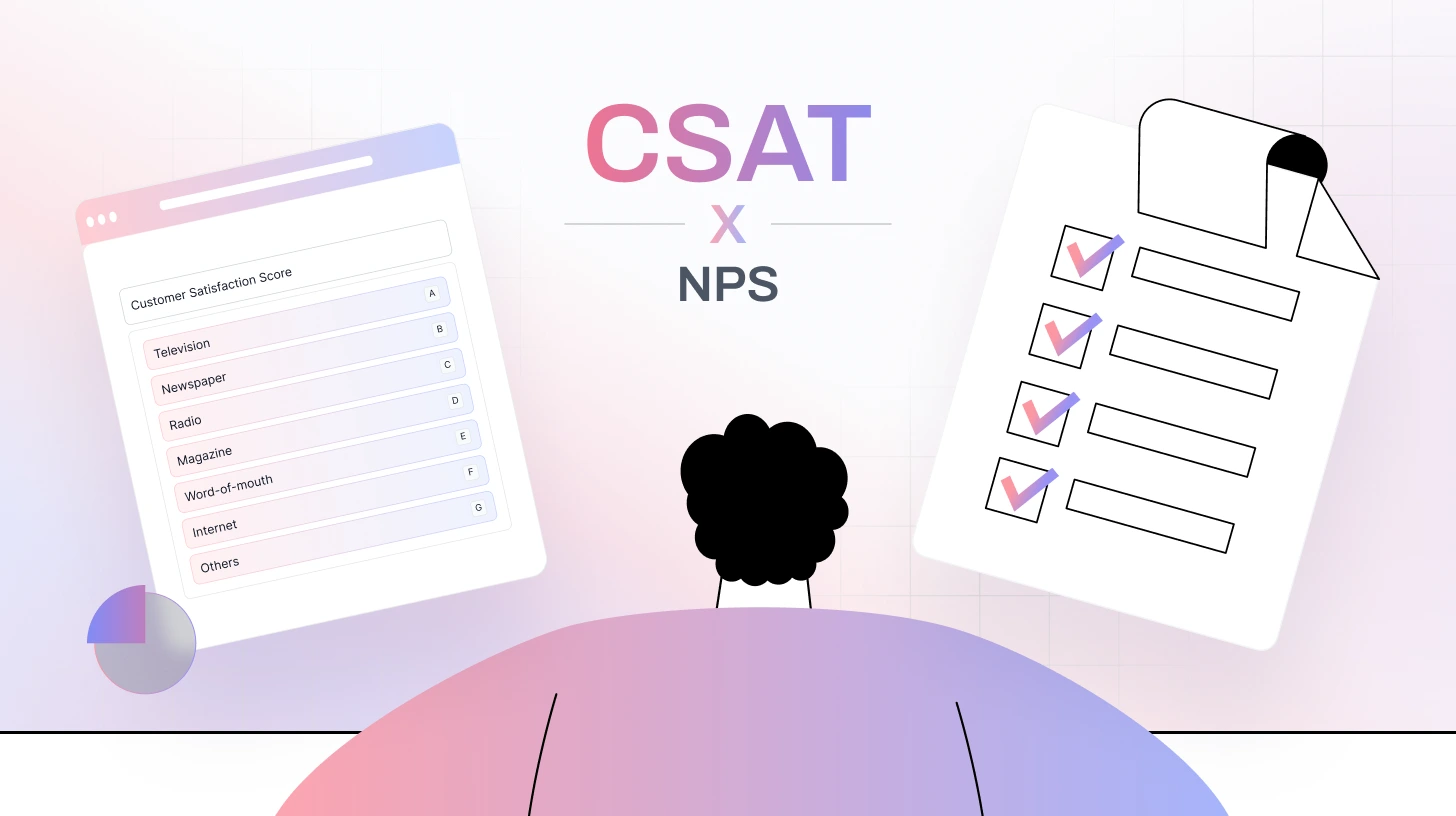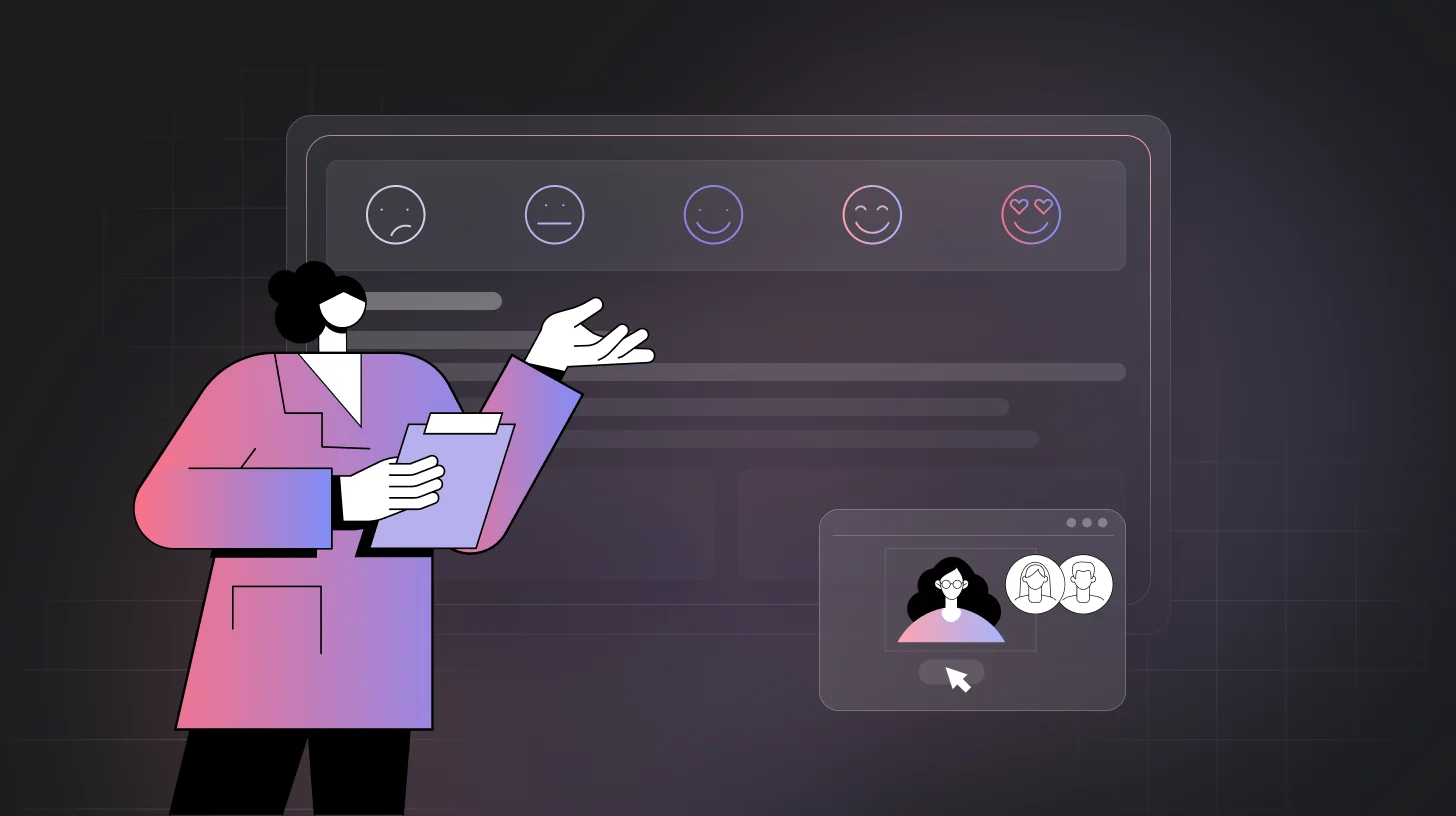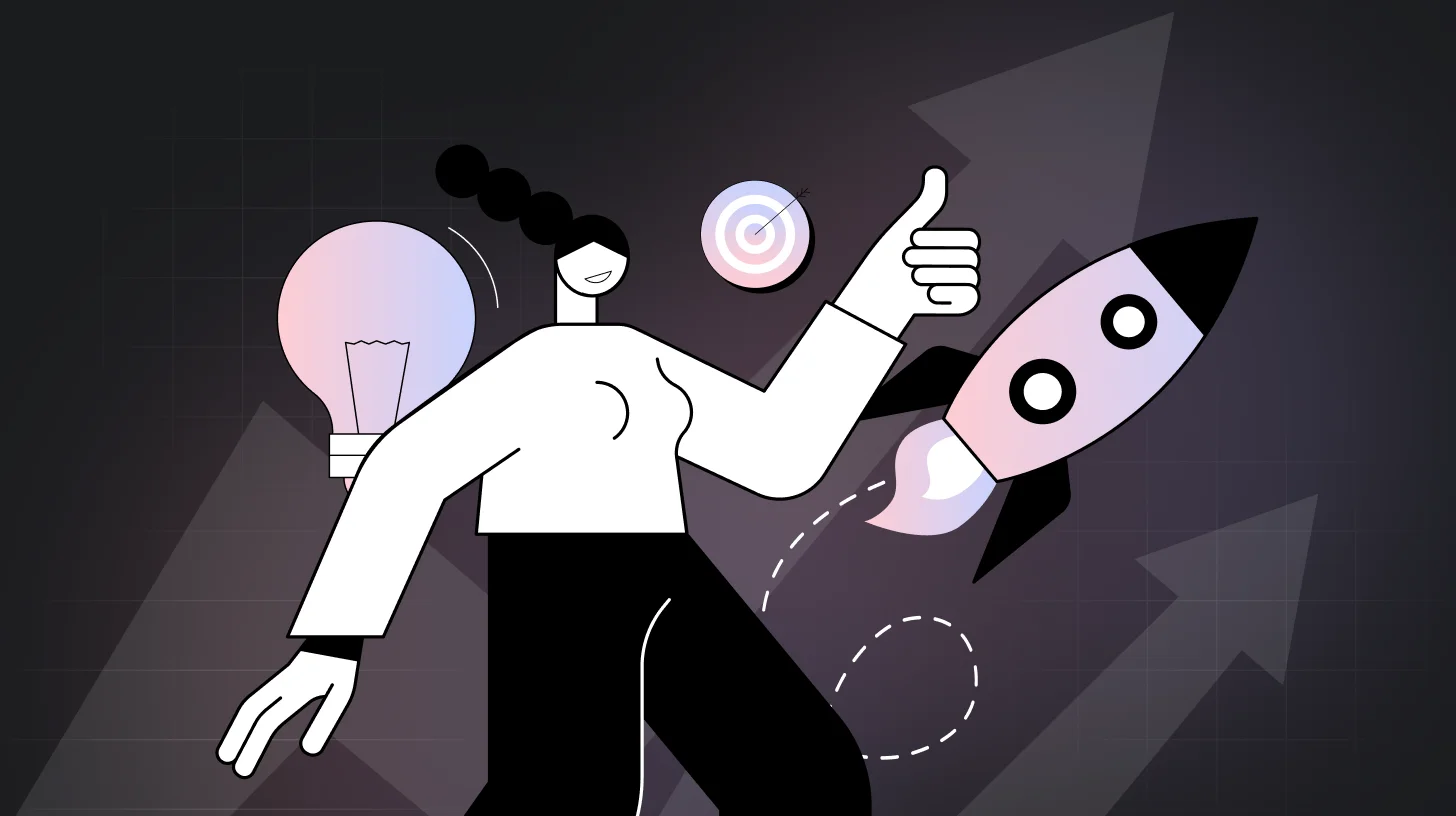 Blog
Blog CSAT vs NPS: Which Customer Experience Metric Actually Works?
CSAT vs NPS: Which Customer Experience Metric Actually Works?CSAT vs NPS: Which Customer Experience Metric Actually Works?

Customer feedback metrics confuse most business owners. You've got CSAT, NPS, CES, and a dozen other acronyms competing for attention. But here's what nobody tells you: most companies pick the wrong metric and waste months collecting useless data.
I've analyzed customer feedback programs at hundreds of SaaS companies. The ones that grow fastest use metrics strategically. They measure what matters instead of chasing vanity stats.
CSAT vs NPS represents the biggest decision you'll make about customer feedback. Get it wrong, and you'll spend six months collecting data that doesn't predict anything. Get it right, and you'll spot problems before customers leave.
What is CSAT vs NPS?
CSAT (Customer Satisfaction Score) measures satisfaction with specific interactions. You ask customers: "How satisfied were you with today's support call?" They rate it 1-5. Simple.
NPS (Net Promoter Score) measures likelihood to recommend your company. You ask: "How likely are you to recommend us to a colleague?" They rate it 0-10. Then you subtract detractors from promoters.
Here's the difference that matters: CSAT tells you about moments. NPS tells you about relationships.
When your support team fixes a bug quickly, CSAT goes up. When customers love your product enough to stake their reputation on it, NPS goes up.
Most companies track both. But if you're starting out, you need to pick one. Pick wrong, and you'll measure the wrong thing for months.
Comparing CSAT vs NPS
When CSAT Wins
CSAT works when you need to fix specific problems fast.
Support teams love CSAT. Send a survey after every ticket. Scores drop? You know which agents need training. Response times spike? You see it in the data immediately.
Product teams use CSAT for features. Launch something new. Survey users after they try it. Scores tell you whether to double down or pivot.
Operations teams track CSAT across touchpoints. Onboarding, billing, account management. Each gets measured separately. Problems get spotted and fixed quickly.
CSAT excels at tactical feedback. It's your early warning system for customer experience problems.
But CSAT has limits. Satisfied customers still leave. They might rate your support 5/5 but switch to a competitor next month. CSAT measures happiness, not loyalty.
When NPS Wins
NPS predicts business growth better than any other single metric.
Revenue teams love NPS. Promoters (9-10 scores) buy more, stay longer, and refer others. They're worth 2-3x more than passive customers.
Executive teams track NPS for board meetings. It's the one number that tells the growth story. NPS trending up? Business is healthy. NPS declining? Time to investigate.
Marketing teams use NPS for segmentation. Promoters get referral programs. Detractors get win-back campaigns. Different scores need different approaches.
NPS works for strategic decisions. It tells you whether customers will stick around and bring their friends.
But NPS moves slowly. It won't help you fix yesterday's support problem. And it doesn't tell you what to fix - just that something needs fixing.
The Pros and Cons Breakdown
CSAT Pros:
- Gets responses immediately after interactions
- Identifies specific problems requiring fixes
- Easy for teams to understand and act on
- High response rates when sent at right time
- Directly connects to operational metrics
CSAT Cons:
- Doesn't predict long-term loyalty
- Satisfied customers still churn
- Limited scope per survey
- Can be biased by recent experiences
- Requires frequent surveying
NPS Pros:
- Predicts revenue growth and referrals
- Widely recognized benchmark
- Segments customers for targeted campaigns
- Stable metric for strategic planning
- Correlates with lifetime value
NPS Cons:
- Doesn't identify specific problems
- Slow to change, hard to improve quickly
- Influenced by factors outside your control
- Lower response rates than CSAT
- Can be gamed by overzealous teams
Which Metric Should You Use?
The answer depends on your biggest problem right now.
Choose CSAT if:
- You're fixing customer experience problems
- You need to improve specific teams or processes
- You want immediate feedback on changes
- You're optimizing individual touchpoints
- You have a limited survey budget
Choose NPS if:
- You're tracking overall business health
- You need executive/board reporting metrics
- You're planning customer segmentation
- You want to predict revenue growth
- You're benchmarking against competitors
Use both if:
- You have mature customer success operations
- You can handle multiple feedback streams
- You need both tactical and strategic insights
- You have resources to act on different data types
- You're optimizing the entire customer lifecycle
Most successful SaaS companies end up using both. But they start with one.
If you're under $10M ARR (Annual Recurring Revenue), start with CSAT. Fix the obvious problems first. Bad onboarding, slow support, confusing billing - CSAT spots these immediately.
If you're over $50M ARR, NPS becomes critical. You need strategic intelligence about competitive positioning and growth potential.
How to Choose Between CSAT and NPS

Ask yourself these questions:
What's your biggest customer problem right now?
- Customers complaining about specific experiences? → CSAT
- Customers leaving without clear reasons? → NPS
What decisions will this data inform?
- Tactical improvements to processes? → CSAT
- Strategic changes to positioning? → NPS
Who needs to act on this feedback?
- Front-line teams fixing problems? → CSAT
- Executives making strategic decisions? → NPS
How quickly do you need results?
- Immediate feedback on changes? → CSAT
- Long-term trend analysis? → NPS
What's your survey capacity?
- Can you send surveys frequently? → CSAT
- Limited survey budget? → NPS
The best metric is the one your team will use to make decisions. Pick based on what drives action.
7 Common CSAT vs NPS Mistakes

Mistake #1: Surveying too much
Companies send CSAT after every interaction and NPS every month. Customers get annoyed and stop responding. Set frequency limits: maximum one survey per customer every 30 days for transactional feedback and 90 days for relationship surveys.
Mistake #2: Measuring without acting
Collecting scores feels productive. But if you don't fix problems, you're just bothering customers. Create response protocols before launching surveys - define who responds to low scores within 24 hours and what actions they take. Stop measuring anything you can't or won't fix.
Mistake #3: Picking the wrong timing
CSAT works immediately after interactions. NPS needs time for relationships to form. Send at the wrong times, get meaningless data. Deploy CSAT within 2 hours of ticket closure and NPS only after customers have used your product for at least 60 days.
Mistake #4: Comparing apples to oranges
CSAT and NPS measure different things. Don't expect them to correlate perfectly. Track them separately on different dashboards and use CSAT for operational decisions while using NPS for strategic planning.
Mistake #5: Gaming the system
Support agents are begging for good CSAT scores. Sales teams are only surveying happy customers. This destroys data integrity. Remove individual performance incentives tied to survey scores and randomize survey distribution to prevent cherry-picking. Make data accuracy more important than high scores by rewarding honest feedback collection.
Mistake #6: Ignoring response bias
Extremely happy and angry customers respond more than neutral ones. Account for this in the analysis. Weight your analysis knowing that neutral customers underrespond by 40-60% compared to extreme experiences.
Mistake #7: Chasing industry benchmarks
Your improvement matters more than how you compare to competitors. Track month-over-month changes in your scores rather than comparing to industry averages that may not reflect your customer base or business model. Focus on closing the gap between your top and bottom-performing touchpoints.
Advanced CSAT and NPS Strategies
Here are proven tactics that top-performing companies use to maximize feedback quality and business impact.
- Trigger surveys based on behavior, not time. Send CSAT after support tickets close. Send NPS after customers hit usage milestones. This approach captures feedback when experiences are fresh and meaningful rather than arbitrary calendar dates.
- Segment results by customer type. Enterprise customers rate differently from SMBs. New customers have different expectations from veterans. Track scores separately for each segment and set different benchmarks based on their unique characteristics and needs.
- Connect feedback to revenue data. Which CSAT scores correlate with expansion? Which NPS segments have the highest lifetime value? Import survey data into your CRM to identify which satisfaction levels predict upsells and renewals.
- Create feedback loops. Low CSAT triggers immediate follow-up. Declining NPS trends trigger strategic reviews.
- Test question variations. "How easy was it to..." vs "How satisfied were you with..." can yield different insights. Run A/B tests on question wording to find which format generates more actionable responses from your specific customer base.
- Use open-ended follow-ups sparingly. One follow-up question max. "What's the main reason for your rating?" Too many open-ended questions tank response rates and create analysis paralysis when you get hundreds of text responses.
The companies that get customer feedback right treat it like a product. They iterate on questions, optimize timing, and measure what matters.
Key Takeaways
- CSAT measures satisfaction with specific interactions, while NPS measures the likelihood to recommend your company overall
- Choose CSAT for fixing operational problems and NPS for tracking brand loyalty and growth potential
- Start with CSAT if you're under $10M ARR to fix obvious experience problems first
- Use both metrics only if you have resources to act on different types of feedback
- Set survey frequency limits to prevent customer fatigue: 30 days for CSAT, 90 days for NPS
- Focus on your improvement trends rather than chasing industry benchmark comparisons
Take Action on Customer Feedback
Choosing the right customer feedback metric determines whether you collect actionable insights or vanity numbers. CSAT and NPS each serve distinct purposes in building sustainable customer relationships and predicting business outcomes.
Ready to move beyond basic survey tools? TheySaid's AI-powered platform automatically analyzes customer conversations to predict satisfaction scores without survey fatigue. Get deeper insights into customer sentiment while reducing the burden on your customers and teams.
Frequently Asked Questions
Q: Can you use CSAT and NPS together?
A: Yes, and most successful companies do. Use CSAT for operational feedback and NPS for strategic intelligence. They measure different aspects of customer experience and complement each other well. Just don't send both surveys to the same customers frequently - it creates survey fatigue and reduces response rates.
Q: How often should you send CSAT vs NPS surveys?
A: Send CSAT surveys immediately after key interactions - support calls, feature usage, purchases. This captures immediate feedback while experiences are fresh. Send NPS surveys quarterly or twice yearly to track relationship changes without overwhelming customers. Frequency depends on your interaction volume and customer communication preferences.
Q: Which metric predicts churn better?
A: Neither alone reliably predicts churn, but they provide different warning signals. CSAT identifies immediate friction that could trigger departure. NPS reveals relationship deterioration that precedes churn by months. Combine both with usage data for accurate churn prediction. Low CSAT plus declining engagement signals immediate risk.
Q: What's considered a good CSAT vs NPS score?
A: CSAT scores above 70% are generally good, with 80%+ being excellent. NPS scores above 0 are positive, 50+ is excellent, and 70+ is world-class. However, benchmarks vary significantly by industry. Focus on your improvement trends rather than absolute scores. A company improving from 60% to 70% CSAT shows better momentum than one declining from 80% to 75%.















.svg)